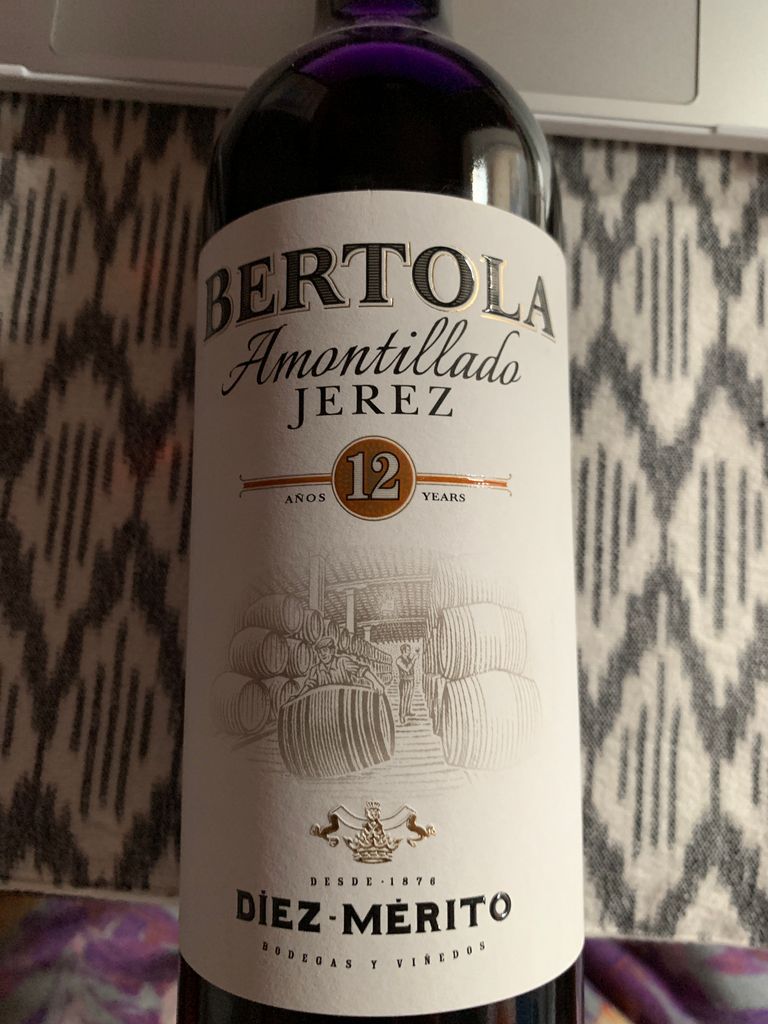
External search
Google (images)
Wine Advocate
Wine Spectator
Burghound
Wine-Searcher
Vintages
N.V.
From this producer
Show all wines
All tasting notes
|
| Drinking Windows and Values |
| Drinking window: not specified |
| Community Tasting History |
| Community Tasting Notes (average 91.5 pts. and median of 91 pts. in 4 notes) - hiding notes with no text | | | Tasted by Harley1199 on 1/24/2018: Enofusión 2018; 1/22/2018-1/24/2018 (IFEMA - Madrid): Softie on the nose predominating aromas of raisins and palm dates. Disgusting on the palate with memories of burnt tyres.
The influence of the dated barrels. This is not for me.
Suave en nariz con predominio de uvas pasas y de dátiles. Penoso en boca con recuerdos a neumático recauchutado. La influencia de los barriles pasados de fecha. No es para mí. (1406 views) | | | Tasted by r.o.man on 12/19/2015 & rated 92 points: Opened and drank over four days. The wine is getting better with time, evolving, full bodied and expressive. Caramel, toffee, mushrooms, saline minerality, very fresh acidity. Long and soft. Getting even more mellow with air. Great. (1099 views) | | | Tasted by r.o.man on 12/17/2015 & rated 91 points: Popped and poured, letting to slowly warm up in the glass. Great meditative wine and still very quaffable. Expressive nutty nose with fresh fruity aromas, whiskey and fluorite notes. Very dry with fresh acidity. Saline and seawater in taste, mossy and earthy tones, nutty. Long with chamomile tea finish. (1082 views) | | | Tasted by yofog on 7/3/2015: Tastes like, and is really, more than 12 years, maybe close to 20. Bio for 3 years and oxidative for the rest, this is definitely a very oxidative, beefy amontillado, pungent and nutty. (1472 views) |
| Spain Vinos de España - Wines of Spain (Instituto Español de Comercio Exterior) | Wikipedia
Wine Map on weinlagen-info
Spain is the third largest wine producing nation in the world, occupying the majority of the Iberian Peninsula with vast diversity in climate, culture, and of course, wine. From inky, dark reds of the [Priorat] to dry, white Finos from Andalusia, Spain can easily boast of elaborating a wide variety of notable styles. Within Spain there are currently 62 demarcated wine regions, of which a handful have gained international recognition: [Rioja], Priorat and [Ribera del Duero]. Yet these regions are only a small sample of the high quality wines Spain produces. Regions such as Cava, Penedes, Somontano, Galicia, Rueda and Jerez are only a few of the numerous regions worthy of exploration throughout Spain. Spain can also lay claim to having the most land under vine in the world, growing up to, by some accounts, 600 indigenous varietals of which Tempranillo is their most well known. Other popular varietals include [Garnacha], Bobal and Monastrell for reds and for whites; the infamous [sic] Palomino Fino grape which is used in the production of sherry wine, Pedro Ximenez in Montilla Morilles, Albarino used in the creation of the bright, effervescent wines of Galicia, and Verdejo in Rueda. - Source: - Catavino.net
Spain is not in the forefront of winemaking for its dessert wines, other than for its sweet wines from Sherry country including the highly revered Olorosos (when sweetened). But apart from Sherry Spain has a range of styles of dessert wines, ranging from the those made from the Pedro Ximenez grape primarily in Jerez and Montilla-Moriles) to luscious, red dessert wines made in the Mediterranean from the Garnacha (Grenache) grape. Some good Moscatels are made in Mallorca, Alicante and Navarre. The northwest corner of Spain, Galicia, with its bitter Atlantic climate, is even making dessert wines, called “Tostadillos” in the village of Ribadivia (similar to France’s “Vin de Paille”). The Canary Islands have made interesting dessert wines for centuries (they are mentioned by Shakespeare, for example) and in recent years the quality of winemaking has been improved and the Canary Islands wines are being better marketed now. The winemaking styles for “Vinos Dulces” are also diverse, from “Late Harvest” (Vendimia Tardía) to “Fortified Wines” (Fermentación Parcial). Based on in-spain.info.Andalucía Andalucía and its wines
DOs
Wikipedia
Map on weinlagen-info
Two suggestions for listing Sherries and Manzanilla wines from a frequent user in a time of change:
The vast majority of these wines are solera-produced and are therefore nonvintage; they should not be listed under a vintage date. A Saca (or bottling) can be listed with a date under Designation, since each bottling is liable to be somewhat different. Dates of accession to your cellar, if it seems important, can also be listed in Designation. <b> Only an Anada (Vintage) wine should bear a vintage date.</b>
Currently, Manzanilla wines (what used to be called Manzanilla Fino) need only be listed as coming from the wine region Manzanilla-Sanlucar de Barrameda. This assumes the 'Jerez' region, which need not be mentioned. For older wines, there may be some confusion about the origin and type. I would suggest following the label as much as possible. jhtJerez-Xérès-Sherry Wiki page on Sherry
Wiki page in Spanish on Jerez
Official website of the Consejo Regulador of Jerez-Xérès-Sherry, Manzanilla de Sanlúcar de Barrameda and Sherry Vinegar
Oloroso, sherries are ”born” when fino fails to form on sherry at the beginning of its life in the bodega or when a producer decides to fortify the wine enough such that the growth of flor is inhibited. |
|




